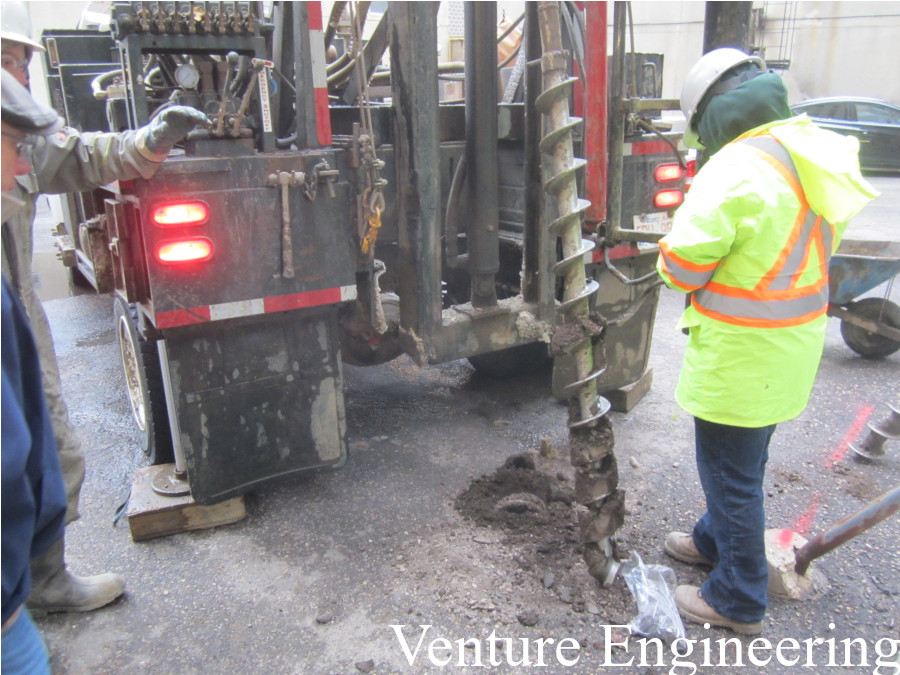How the Phase 2 Environmental Site Assessment Relates to Environmental Due Diligence
Conducting an Environmental Site Assessment (ESA) is a methodical, regulated process that provides peace of mind to investors or other parties concerned by the purchase, transferring, re-zoning or re-financing of a property. Often required by the lender or a government authority, the process identifies existing or potential site contamination and thus allows for the mitigation of liabilities.
Once the first tier of evaluation, the Phase I ESA, is complete, the need for further investigation by way of intrusive sampling and analysis is determined. The Phase I report may indicate that no further investigation is warranted, in which case the due diligence is complete based on available information. Alternatively, potential or actual sources of contamination may be identified and a Phase 2 ESA becomes the next action item in the diligence process.
A Phase I ESA was completed for the property in question, and the report identified a Recognized Environmental Concern (REC); thus recommending that a Phase 2 ESA be undertaken in order to sample and test various substances on the site. At this stage, it is not necessary for a client to entirely abandon the potential transaction or become paralyzed in their decision to proceed, but it does indicate that close attention must be paid to the potential environmental liability on the property, for which a remediation plan, its costs, and its timeline may need to be considered and evaluated as part of the agreement.
We’ve completed many Phase 2 ESA’s over the last 30 years. Give us a call today, 780-484-1974 to learn more about our process or how we may be able to assist your requirements.
Why would a Phase 1 ESA require a Phase 2 Environmental Site Assessment to be Completed
The results of a Phase 1 Environmental Site Assessment may uncover potential sources of environmental concern that may warrant further investigation via a Phase 2 ESA.
A few examples of common concerns which may warrant a Phase 2 Environmental Site Assessment may include:
- The discovery of a spill or staining
- Evidence of a leaking underground storage tank; or minimal information on the decommission, usage of an underground storage tank
- Finding releases from adjacent properties

Phase 1 Environmental Site Assessment may warrant further investigation via a Phase 2 ESA
What would a Phase 2 Environmental Site Assessment Checklist entail?
Methodical and purposeful, a Phase 2 ESA consists of the following steps:
- Planning the Site Investigation: Includes reviewing the previous ESA reports, coordinating underground utility clearances, access to the site for testing, and monitoring well/borehole location layouts (if applicable).
- Conducting the Site Investigation: Includes activities such as mobilizing, drilling, logging, installing monitoring wells and boreholes, collection of identified materials for on-site and laboratory analysis, conducting soil vapour screening, and the subsequent submission of all samples to an accredited laboratory for analysis.
- Review and Evaluation of the Collected Information and Laboratory Analysis: Review and assessment of laboratory and on-site results in a holistic fashion.
- Preparation and Submission of the Phase 2 ESA Report: Compilation of a report that identifies and describes any contamination, the impacted locations, and recommendations for next steps.
What Happens After a Phase 2 ESA is Completed?
There are three typical outcomes following a Phase 2 ESA:
- The identified Recognized Environmental Condition (“REC”) from the Phase I ESA is deemed minor, or limited in scope; thus requiring no further action.
- The identified REC is confirmed and presents a higher risk than the buyer is willing to accept; thus the transaction is abandoned.
- The identified REC is confirmed, the extent of contamination is determined, and a Phase 3 ESA is prescribed.